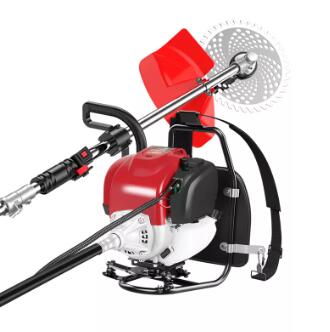Hex Head Bolts vs. Other Fasteners: What Sets Them Apart
2024-09-05
When it comes to choosing the right fastener for a project, the options can be overwhelming. Among the many available fasteners, the hex head bolt stands out for its strength, durability, and versatility. But how do hex head bolts compare to other types of fasteners, such as screws, carriage bolts, and lag bolts? In this blog, we’ll compare hex head bolts to other popular fasteners, highlighting the key differences and when to use each type.
1. Hex Head Bolts vs. Screws
At first glance, bolts and screws may seem quite similar, but they serve distinct purposes. A hex head bolt is typically used with a nut to create a secure connection, while a screw is threaded directly into a material such as wood, metal, or plastic.
- Threading: Bolts usually have a coarser thread compared to screws, making them better suited for high-load applications where the connection needs to withstand significant stress. Screws, on the other hand, are ideal for fastening materials that don’t require the extra strength provided by a bolt-nut combination.
- Installation: Hex bolts require a wrench or socket to tighten, whereas screws can usually be installed with a screwdriver or drill. This makes screws more convenient for smaller projects, while hex bolts are better for larger, more demanding tasks.
- Strength: If strength is a priority, hex head bolts are the superior option. Screws are typically weaker and are not recommended for heavy-duty applications like securing metal frames or structural components.
2. Hex Head Bolts vs. Carriage Bolts
Carriage bolts, like hex bolts, are designed for use with nuts. However, the two differ significantly in both their design and application.
- Head Shape: Carriage bolts have a smooth, rounded head, while hex bolts have a hexagonal head that allows for easy tightening with a wrench or socket. The rounded head of a carriage bolt is designed to be hammered into place, preventing the bolt from turning while tightening the nut.
- Applications: Carriage bolts are primarily used in woodworking and metal-to-wood applications. They’re ideal for situations where you need a smooth, tamper-resistant finish on one side of the connection. Hex bolts, on the other hand, are more commonly used in heavy-duty applications like machinery, construction, and automotive assembly.
- Strength: Both bolts offer excellent strength, but hex head bolts are preferred in projects where precise torque and high tension are needed, while carriage bolts are better suited for aesthetic applications where tamper resistance is necessary.
3. Hex Head Bolts vs. Lag Bolts
Lag bolts, also known as lag screws, are similar to hex head bolts in terms of shape but are used in very different situations.
- Threading: Lag bolts have sharp threads designed to cut into wood, whereas hex bolts are typically paired with nuts to secure materials together. This makes lag bolts ideal for heavy-duty wood applications, such as securing beams or wooden fences.
- Installation: Lag bolts don’t require a nut. Instead, they are driven directly into the wood using a wrench, creating a strong connection that doesn't need additional hardware. Hex bolts need a corresponding nut to be tightened, making them suitable for securing two separate pieces together.
- Strength and Use: While both are strong, hex bolts are generally used in more industrial settings for heavy metal or wood connections, while lag bolts are often found in woodworking, decking, and other wood-based applications.
4. When to Use Hex Head Bolts
Hex head bolts are the go-to fastener for projects that require a strong, secure connection. Here are a few instances where a hex head bolt is the best choice:
- High-Torque Applications: Hex head bolts are perfect for situations where the fastener needs to be torqued tightly without stripping. The six-sided head provides excellent grip for tools, ensuring the bolt can be securely fastened.
- Heavy Loads: When you need to support heavy objects or withstand high levels of stress, hex head bolts offer the strength necessary to keep everything in place.
- Multi-Material Connections: Hex head bolts are commonly used when joining two different materials, such as metal to wood or metal to concrete, in combination with washers and nuts for a secure, long-lasting bond.
Conclusion
Hex head bolts are an indispensable fastener for many types of projects, providing more strength and durability than screws and offering more versatility compared to carriage or lag bolts. When working on heavy-duty tasks that require a secure and long-lasting connection, hex head bolts are often the best choice. Understanding the differences between hex head bolts and other fasteners ensures that you’re equipped to select the right hardware for any job.



